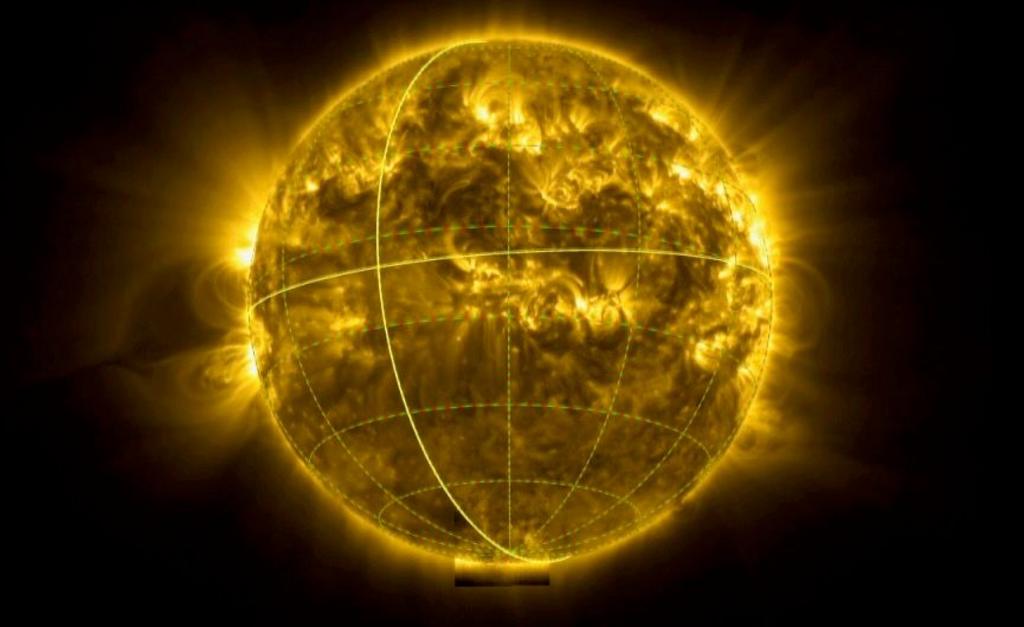The European Space Agency’s Solar Orbiter has transmitted the first-ever images and video of the Sun’s south pole.
These unprecedented images will significantly advance our understanding of the Sun’s cyclical behavior, ranging from periods of intense storms to quieter phases.
This is critical because substantial solar activity can disrupt satellite communications and even damage terrestrial power grids.
The images reveal a striking atmosphere, shimmering with regions reaching temperatures of a million degrees Celsius, interspersed with cooler (though still intensely hot at one hundred thousand degrees) dark gas clouds.
According to ESA’s Director of Science, Prof. Carole Mundell, these images, the closest and most detailed ever captured, will illuminate the workings of our life-giving star.
“Today marks humankind’s first glimpse of the Sun’s pole,” she stated. “Understanding the Sun’s mechanisms and predicting its behavior is crucial, given its vital role and potential to disrupt modern systems.”
From Earth, the Sun appears as a featureless disc. However, specialized filters and frequencies reveal its true nature: a dynamic fluid sphere with swirling magnetic fields generating flares and atmospheric gas loops.
These magnetic fields govern the Sun’s periods of intense activity and particle emissions directed toward Earth.
Scientists understand the Sun’s quiet periods, characterized by ordered magnetic fields and defined poles. This phase lacks violent explosions. However, these fields become complex and chaotic during a reorientation, with the poles flipping roughly every 11 years.
This chaotic period results in solar storms that can potentially harm communication satellites and power grids, though they also create stunning auroras.
Prof. Lucie Green of UCL explains that predicting this activity using solar computer models has been challenging due to the lack of data on magnetic field migration towards the poles. This limitation has now been overcome.
“We now possess the missing piece,” she told BBC News. “Solar polar magnetic field reversal has been a major scientific question, and Solar Orbiter will allow us to measure crucial fluid flows that transport magnetic field segments to the polar regions for the first time.”
The ultimate aim is to develop accurate solar computer models for space weather prediction. Such forecasts would significantly benefit satellite operators, power companies, and aurora enthusiasts.
“This is the Holy Grail of solar physics,” says Prof. Christopher Owen, a solar wind expert. “Solar Orbiter will help us unravel fundamental space weather science, though further research is needed before we can reliably predict Earth-directed eruptions.”
Solar Orbiter has also captured new images detailing the Sun’s chemical elements and their movement at various layers. The SPICE instrument, measuring spectral lines emitted by elements like hydrogen, carbon, oxygen, neon, and magnesium at specific temperatures, has achieved this.
For the first time, the SPICE team has tracked spectral lines to measure the speed of solar material clumps, providing insights into the solar wind’s particle ejection mechanisms.
A Nasa exhibit lets you hear the Sun’s raw power, turning solar data into an unforgettable soundscape.
A multi-billion pound project to build a nuclear power station could get the go-ahead on Wednesday.
The space agency has published its budget request to Congress which would see funding for science projects cut by nearly a half.
A new Oxford study confirms the tremors felt across the globe were caused by tsunamis in Greenland.
A public health warning is issued as 190,000 people are expected at open farm events across the UK.

